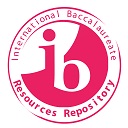Structured interview: Sun-bathing
 The following Paper 3 looks at the optimism bias in health behaviour related to sunbathing among Swedes. Although the original study was a questionnaire, the study below is described as a structured interview. You will find sample responses at the end of the text.
The following Paper 3 looks at the optimism bias in health behaviour related to sunbathing among Swedes. Although the original study was a questionnaire, the study below is described as a structured interview. You will find sample responses at the end of the text.
I have used this Paper 3 as part of our study of determinants of health. You will see this as part of the Determinants of Health lesson plan 1.3.
The Stimulus Piece
The incidence of skin cancer has had a rapid increase in Sweden over the last 20 years. Sun exposure is an important preventable risk factor for skin cancer. The perception of one’s own susceptibility to harm is essential in theories about self-protective behaviour. The aim of the study was to examine the associations between different risk perceptions, sun-related behaviour, readiness to change, and optimism bias.
A total of 722 visitors of a mobile skin cancer-screening unit took part in a structured interview in the summer of 2001. The campaign was conducted at five different locations in Sweden. The mean age was 46 years (min = 16, max = 84, SD = 17.0). 61% were women and 39% were men.
The interview measured the frequency of sunbathing, risk perception, judgment of personal ability to protect oneself from developing skin cancer, and readiness to change sunbathing behaviour.
The participants in this study seemed to have realistic beliefs about the contribution of solar radiation to the risk of developing skin cancer; however, they seriously underestimated skin cancer incidence in the population and the impact of skin cancer on general health. About 90% of both men and women of all ages underestimated the incidence of skin cancer in the population.
85% of the sample did not intend to stop sunbathing. Men seemed to be more optimistic about their chances of not getting skin cancer despite the fact that they are much more likely than women to be diagnosed with a malignant skin tumour. This could be a result of an unclear risk perception concerning sun exposure. The optimism among men could be due to a belief that sunbathing is a risk factor for skin cancer but sun exposure during other activities is not.
People concerned about skin cancer seem to be aware of the fact that sun exposure is an important risk factor for skin cancer, but they fail to use this information in a consistent way to formulate a judgment of their own vulnerability to harm. People need to be informed about the high incidence of skin cancer, the personal risk factors of skin cancer, and the fact that unintentional as well as intentional sun exposure increases the risk of developing skin cancer
Richard Bränström, Sveinbjörn Kristjansson, Henrik Ullén; Risk perception, optimistic bias, and readiness to change sun-related behaviour, European Journal of Public Health, Volume 16, Issue 5, 1 October 2006, Pages 492–497, https://doi.org/10.1093/eurpub/cki193
Questions
1a. Identify the method used and outline two characteristics of the method.
The researchers used a structured interview. Structured interviews have an interview schedule that asks specific questions and is not open to taking in other information. The aim of this approach is to ensure that each interview is presented with exactly the same questions in the same order. Questions tend to be less open-ended and allow for easier comparison than in an unstructured interview. The method is less "natural" than unstructured interviews and is often seen as having lower ecological validity.
1b. Describe the sampling method used in the study.
The researchers interviewed volunteers who were available at a cancer screening center. This was a sample of opportunity. It was also from five different locations in Sweden, theoretically providing for a more diverse sample. This sample could also be considered a haphazard sample as it was made up of people who stopped by the mobile screening center. The majority of the sample was middle-aged and female.
1c. Suggest an alternative or additional research method giving one reason for your choice.
There are a few alternatives to this method. They could use a focus group in which people share their thoughts in a group setting. This may prompt ideas that were not shared in a one-on-one interview. Focus groups also have higher ecological validity. The researcher could also do a case study, looking at the participants' actual habits of a summer season and comparing that to their perceptions of their behaviour. This would be more holistic and would control for biases of the participants in an interview situation.
2. Describe the ethical considerations that were applied in the study and explain if further ethical considerations could be applied.
The researchers would have to gain consent from the participants in which they would have to explain the nature of the interview and the goals of the research. They may decide not to tell the true aim of the study until the participants are debriefed. This would be deception of omission, with the goal of not letting the participants know that they are trying to find out if they are overly optimistic about their risks of skin cancer. In the debriefing, the researchers would have to explain how the data would be used and that the participants' identities would remain anonymous. In addition to their names being anonymous, it would be important that the date of the interview and the place where the interviews occurred would not be revealed. Keeping the data anonymous protects the interviewees from potential embarrassment. They would also share the findings with the participants with the hope of changing health behaviours. The participants have the right to withdraw at any point in the study - for example, if they do not like the questions or feel uncomfortable with the questions being asked. They may also withdraw once they learn of the results of the study. This may have an influence on the study as those people who felt the most "judged" could pull out of the study, biasing the overall findings. Finally, there would be no undue stress or harm in this study. If anything, sharing the findings with the participants may actually help to prevent harm in the future.
3. Discuss how a researcher could ensure that the results of the study are credible.
There are several ways in which the researchers could increase the credibility of their findings. First, they could use triangulation. They have used data triangulation, collecting data from five different locations. If the research is credible, then the trends will be seen in most, if not all of the locations. In addition, they could use researcher triangulation where different researchers carry out the interviews and process the data. Once again, this would increase credibility - although in the case of structured interviews, this may not be as important as in other interview styles. Using more than one researcher to carry out the interviews lowers the potential for interview effects playing a role in the study - that is, the way in which the attractiveness, gender, way of asking questions, body language - or any other behaviour on the behalf of the interviewer may have affected the responses of those being interviewed. With regard to the analysis of the interviews, the researchers should all come to the same conclusion about the data; this avoids researcher bias.
A final form of triangulation would be method triangulation. In this case, using focus groups or observations of the participants' behaviour would let the researchers know if they get the same results with different methods, increasing the "validity" of their findings - and eliminating the potential of the method used influencing the results.
Another way to establish credibility is to ask the participants for feedback on the findings - do they think that this really reflects their behaviour? If they confirm the findings, then this increases credibility.
Having a representative sample also increases the credibility of the study. As these people were all at a cancer screening clinic, it is clear that they are concerned about the risk of cancer. This may mean that they are not representative of the average Swede.
If the research findings confirm grounded theory - that is, past theory and research studies, then this increases the level of credibility.
Finally, having the researcher practice reflexivity can also increase the credibility of the findings. This is when the researcher reflects on his or her potential biases in the study or how the way that the research was carried out may have influenced the findings of the study. Acknowledging these limitations is an important part of establishing credibility.

 IB Docs (2) Team
IB Docs (2) Team
